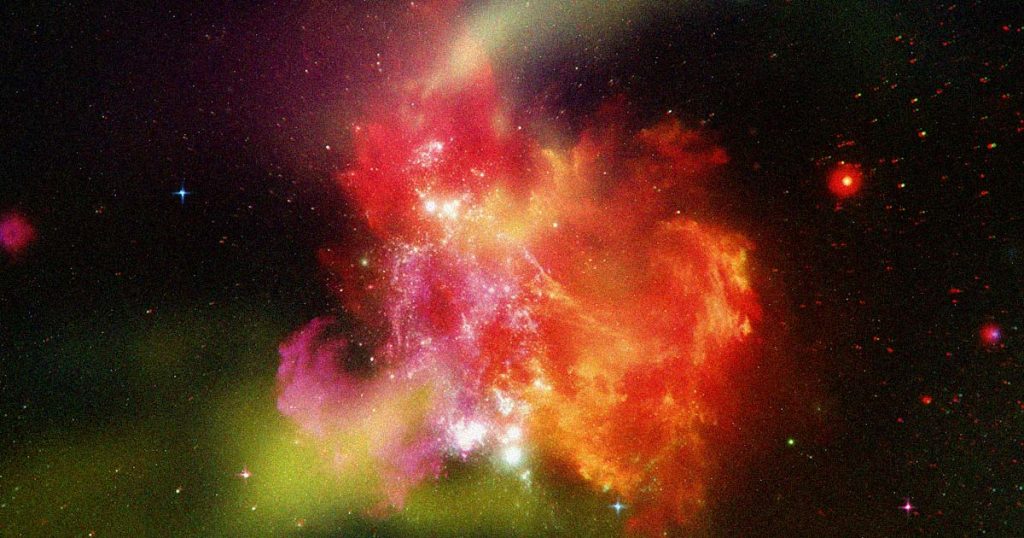Explosive Findings
The James Webb Space Telescope has captured some bizarre imagery of an exploding star that, for some reason, kept repeating itself.
In a press release, NASA said that new Webb images of what researchers have dubbed “Supernova H0pe” could provide more evidence than ever that our current understanding of the Universe is completely off-kilter.
Back in 2015, Hubble also captured imagery of the same supernova. But in the latest snaps of the hosting galaxy cluster called TK X light years away, something was vastly different — there were three dots that all appeared to correspond to the same star explosion.
“It all started with one question by the team: ‘What are those three dots that weren’t there before? Could that be a supernova?'” said astronomer Brenda Frye of the University of Arizona, one of the lead writers on a paper awaiting peer review about the stunning find, in a statement.
Fyre and her colleagues concluded that Webb’s cutting-edge gravitational lensing created this fascinating three-dot problem.
“The lens, consisting of a cluster of galaxies that is situated between the supernova and us, bends the supernova’s light into multiple images,” she said. “This is similar to how a trifold vanity mirror presents three different images of a person sitting in front of it.”
“In the Webb image, this was demonstrated right before our eyes in that the middle image was flipped relative to the other two images, a ‘lensing’ effect predicted by theory,” she added.
Trifold Supernova
The Supernova H0pe image ended up showing three versions of the same supernova because, as Frye continued, “the light traveled along three different paths.”
“Since each path had a different length, and light traveled at the same speed, the supernova was imaged in this Webb observation at three different times during its explosion,” the astronomer elaborated.
The values related to these time delays seem, in turn, to be compelling evidence for the rate of universal expansion that’s otherwise known as the Hubble constant, which was discovered Edwin Hubble — the space telescope’s namesake — nearly 100 years ago.
“Trifold supernova images are special: The time delays, supernova distance, and gravitational lensing properties yield a value for the Hubble constant,” Frye enthused. “The supernova was named SN H0pe since it gives astronomers hope to better understand the universe’s changing expansion rate.”
After crunching the numbers, Frye and her fellow researchers determined that the measurements taken from the new Webb images of the supernova do seem to back up Hubble’s constant — a finding that would have been exciting on its own even without the triple-dot wonder.
With H0pe’s Hubble constant value matching “other measurements in the local universe,” the astronomer said that she and her team have discovered something “impactful.” The team is now hoping to get an even closer look at the distant Supernova H0pe and others like it in the future using the James Webb telescope.

